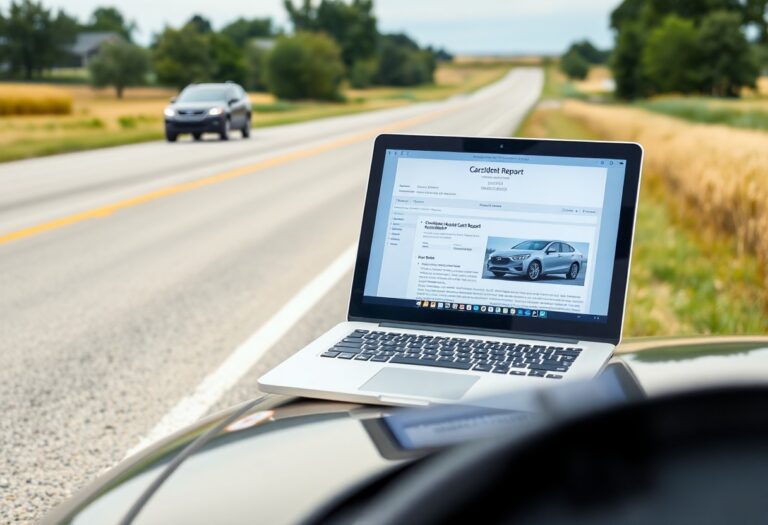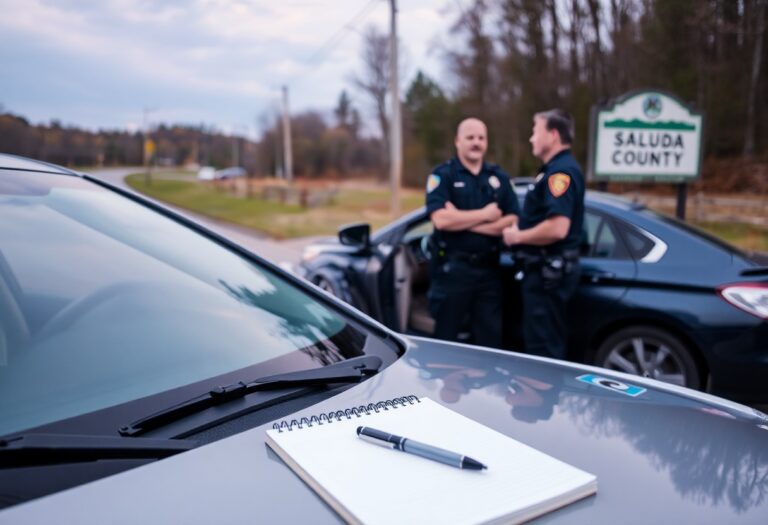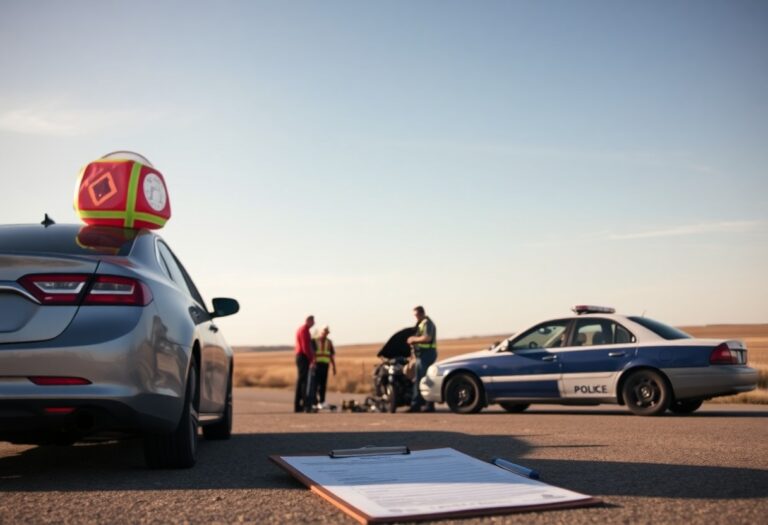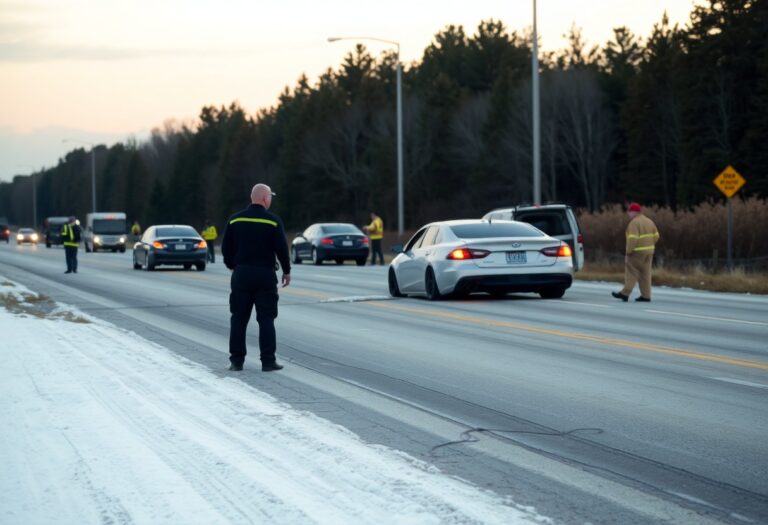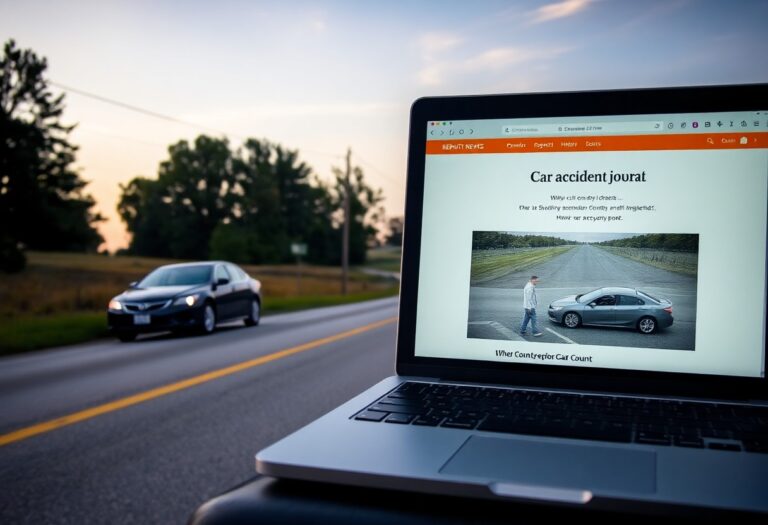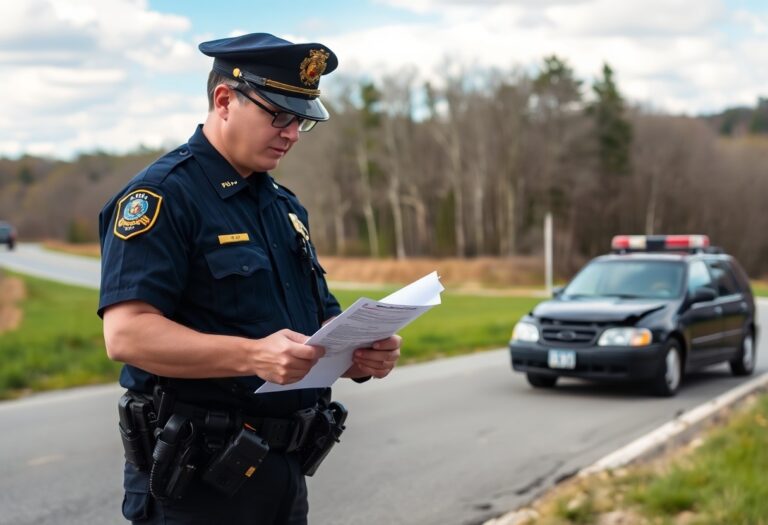There’s a lot to navigate when it comes to car accident reports in Westchester County, New York. Understanding the process can help you manage the aftermath efficiently, ensuring you have the necessary documentation for insurance claims and legal matters. This blog post will provide you with crucial steps to take immediately following an accident, how to obtain your report, and what information you need to gather. By staying informed, you can protect your rights and interests during this challenging time.
The Legal Framework Surrounding Car Accidents in Westchester
Your understanding of the legal landscape is vital when navigating the aftermath of a car accident in Westchester. Various laws and regulations shape how accidents are assessed and resolved. New York follows a no-fault insurance system, meaning your own insurance pays for medical expenses and lost wages regardless of who caused the accident. This can streamline claims but also complicates the process if severe injuries are involved, potentially leading to litigation against the at-fault party.
Key Laws and Regulations Impacting Drivers
Familiarity with New York State’s vehicle and traffic laws can significantly impact your case after an accident. For instance, New York’s Vehicle and Traffic Law establishes that drivers must carry minimum liability coverage to protect both themselves and others on the road. Additionally, knowing the rules governing distracted driving and DUI regulations can be relevant if such factors contribute to your accident.
Understanding Negligence and Liability in Accidents
The concepts of negligence and liability play a critical role in determining who is at fault after a car accident. In New York, establishing negligence involves proving that the other party failed to act with the level of care a reasonable driver would in similar circumstances. This often hinges on evidence, such as eyewitness accounts, police reports, and traffic camera footage, which can clarify the responsibilities of each driver involved.
When evaluating negligence, you’ll need to consider various elements, including the driver’s adherence to traffic laws and their ability to avoid hazardous situations. In many cases, comparative negligence comes into play, which assesses each party’s contribution to the accident. For example, if you were found to be 20% at fault, your compensation could be reduced accordingly. This nuanced understanding of liability can significantly influence the outcomes of accident claims, making it necessary to gather strong evidence to support your case.
Navigating the Car Accident Report Process
Navigating the car accident report process can feel overwhelming, but understanding the steps involved simplifies it significantly. After an accident, you should focus on gathering the necessary documentation and reporting the incident to the appropriate authorities. This process starts at the scene of the accident, where collecting vital information lays the groundwork for a straightforward report submission.
Step-by-Step Guide to Filing a Report
| Step 1: Ensure Safety | Move to a safe area and check for injuries. |
| Step 2: Call Authorities | Contact the police or emergency services as needed. |
| Step 3: Gather Information | Record details like time, date, weather, and other drivers’ information. |
| Step 4: File a Report | Submit the necessary paperwork to your local police department. |
Essential Information to Document After an Accident
Documenting important information after an accident can greatly assist your case. You should collect names, contact numbers, and insurance details of all parties involved. Also, take photographs of the accident scene, vehicle damages, and any visible injuries. Keeping detailed notes will help create a comprehensive report that provides clarity in disputes or legal proceedings.
In the immediate aftermath of an accident, you should be methodical in gathering details that contribute to an effective report. Generate a comprehensive file that includes the police report number, accident location, witness statements, and information regarding any ongoing medical treatments. The more meticulous the information you compile, the easier it becomes to navigate insurance claims or potential legal actions. Moreover, having a structured account of events can help clarify any misunderstandings that may arise later regarding fault or liability. A thorough documentation process protects your interests in subsequent discussions with insurers and legal representatives alike.
The Role of Police and Local Authorities
In the aftermath of a car accident, the presence of police and local authorities is significant. They are responsible for documenting the incident, collecting evidence, and ensuring the safety of all parties involved. Their official reports serve as an impartial record of the event, which can be critical for legal and insurance proceedings. Additionally, police will investigate the scene to determine if any laws were violated, such as speeding or reckless driving, providing a clearer context to the accident that affected your life.
How Police Reports Influence Insurance Claims
Police reports play a vital role in the insurance claims process by providing an objective account of the accident. Insurers often rely on the details documented by the police to assess liability and evaluate your claim. Accurate and thorough reports can streamline the claims experience, often resulting in quicker settlements, as they offer a clear basis for determining fault. If the report states that another party was at fault, you have a stronger foundation for your claim.
Engaging with Local Law Enforcement Properly
Proper engagement with local law enforcement can significantly affect how the aftermath of your car accident unfolds. Begin by providing necessary information without admitting fault, as statements made at the scene can impact liability assessments later on. Always request a copy of the police report as it serves as vital documentation for your insurance claim or legal action. Additionally, if you encounter any issues with the report or its details, ensure to follow up promptly with the appropriate police department.
When interacting with local law enforcement, clarity and composure are your best allies. Approach officers respectfully and answer their questions accurately and succinctly. If you believe there are inaccuracies in how the accident is reported, document your concerns and follow up respectfully to amend those details with the department. Keeping a thorough account will also aid in your ongoing communication with insurance adjusters and legal representatives. Understanding the procedures set forth by law enforcement fosters both transparency and accuracy, which are vital in supporting your case moving forward.
Common Challenges in Obtaining and Using Accident Reports
Acquiring and utilizing car accident reports in Westchester County presents a series of challenges. You may encounter issues like delayed access to reports, disputes regarding their accuracy, and the complexities of understanding legal jargon within the documentation. Each of these factors can add to your stress during an already difficult time, leading to potential delays in filing insurance claims or pursuing legal action.
Potential Delays in Report Access
Accessing your accident report may not be immediate. You could face significant delays due to administrative processing times or the need for further investigation. Typically, reports are available within a few days, but in more complicated cases, it can take weeks or even months. This lag can hinder your ability to take prompt action, affecting your overall recovery process.
Handling Disputes Over Report Accuracy
Discrepancies in information presented in your accident report can arise and may cause conflicts with insurance claims or legal proceedings. In these instances, you need to actively review the report, checking for inaccuracies concerning vehicle details, witness statements, or police accounts. If you find errors, it’s vital to gather supporting evidence and communicate with law enforcement or the reporting agency to correct any inaccuracies.
Disputing the accuracy of a car accident report involves a systematic approach. Start by obtaining a copy of the report as soon as possible and thoroughly reviewing each section for mistakes. If inconsistencies appear, collect evidence such as photographs from the scene, eyewitness statements, and any relevant documents that can corroborate your perspective. Next, directly address the reporting agency, providing your evidence, and request a formal review or amendment of the report. The agency may consider your dispute, but understanding that the process can require persistence is key. Clear documentation and effective communication will greatly enhance your chances of a successful resolution.
Strategic Tips for Leveraging Accident Reports in Claims
Utilizing accident reports effectively can significantly enhance your claims process. Keep in mind these strategic tips:
- Review the report thoroughly for accuracy
- Identify key eyewitness statements
- Highlight any details that support your version of events
- Use the report to establish liability
- Share the report with your insurance adjuster
Any oversight in these areas could lead to complications in your claim.
Using Reports to Maximize Insurance Settlements
Insurance companies often evaluate accident reports to determine fault and settlement amounts. By presenting a well-documented report that details the events, damages, and any witness accounts, you strengthen your position. Highlighting aspects such as property damage and personal injuries can lead to a higher settlement offer. Accurate and thorough documentation is vital to persuade the insurer to recognize the full extent of your losses.
When to Seek Legal Assistance for Complex Cases
Some accident cases involve intricacies that may require legal representation. If your accident report indicates shared fault, multiple vehicles were involved, or serious injuries occurred, consulting a lawyer can provide clarity. You may also want to seek legal help if you’re facing pushback from insurance companies or dealing with complicated liability issues.
When navigating complex cases, a lawyer can allow you to focus on recovery while they handle negotiations and legalities. They have the expertise needed to interpret various aspects of the accident report, uncover additional evidence, and ensure all your rights are protected. Having someone to advocate for you, especially when faced with daunting insurance processes, can be invaluable in securing a fair outcome for your claim.
Final Words
Following this guide, you now have a clearer understanding of how to navigate car accident reports in Westchester County, New York. Whether you need to obtain a report for insurance purposes or legal matters, knowing the steps involved can help streamline the process. Always ensure you have your relevant information on hand and be aware of the specific protocols in place. By being informed, you can confidently manage your situation and ensure your rights and interests are protected.







